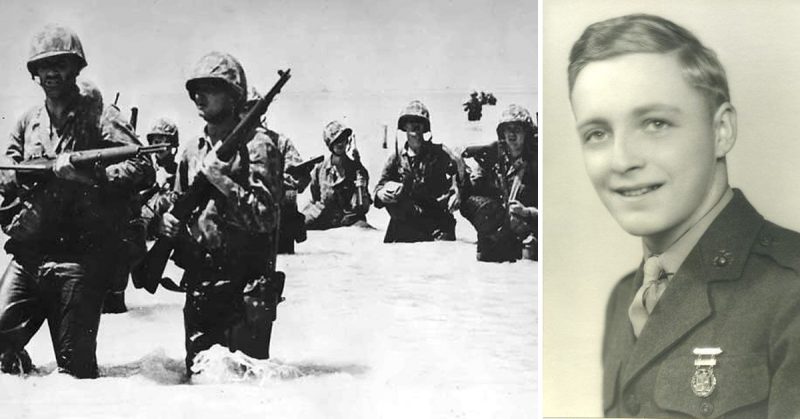Dale Geddes was killed in the Battle of Tarawa in WWII in November of 1943 at the age of 21. For over 70 years his remains have been buried on the island of Betio where he was killed, and it seemed that they would never be located and sent home to his family.
In 2015, History Flight notified the Defense POW/MIA Accounting Agency that they had located a burial site on Betio, and several U.S. Marines’ remains were gathered from that site. Through DNA testing, authorities have determined that Geddes is one of them.
“Dale is finally coming home,” Linda Elliott, a grandniece of Geddes, told the Grand Island Independent. “I know that I speak for the family to say that we are all very happy, very privileged, to witness the wishes of Dale’s parents and Dale’s siblings. Our boy is coming home.”
Staff Sgt. Kristen Duus is a member of the Defense POW/MIA Accounting Agency. She said that they were able to use “mitochondrial DNA, which traces the maternal line. So that matched a niece of his.” They also examined dental records and other circumstantial evidence. “All which matched up to his records,” Duus said.
In the late 1940s, an operation was undertaken to recover remains of U.S. soldiers on the island. Geddes was not found during that operation, and his remains were declared “non-recoverable.” It wasn’t until History Flight found the burial location almost 70 years later that his remains were found.
In the first couple of days, thousands of troops were killed or wounded in the Battle of Tarawa. Although it is small in size, the strategic advantage afforded by the Tarawa atoll made it a prime target for takeover by the Americans: In order to gain a base in the Mariana Islands from which American bombers could strike mainland Japan, the US first had to take the Marshalls, and before they could take the Marshalls, Tarawa needed to fall.
The Japanese had heavily fortified the islands, though, and supplied thousands of Japanese troops to defend them. They built bunkers and put a cannon on the beaches. War correspondent Robert Sherrod was with the U.S. troops when they landed, and he wrote about what he saw. “They descended into amphibious landing vehicles and raced toward the beach, but the tide was out, and the water was too shallow for their boats. The Marines found themselves stranded on reefs, hundreds of yards offshore, wading through waist-high water as Japanese gunners mowed them down.”
Later this month, Geddes will be buried next to his parents in a cemetery in Nebraska. His family had been told that he died “administering first aid to a buddy who was a fellow Marine.”
Fought from November 20-23, 1943, the Battle of Tarawa saw American troops fighting the Japanese in order to gain control of the island of Betio in the Tarawa Atoll.
Over those three days, 1,000 Marines and sailors were killed. Another 2,000 troops were wounded.
Geddes had died on the first day of the battle.
According to an article from 1944, Geddes was hit by an enemy sniper whilst trying to attend to his buddy’s wounds.
Before the war, Geddes had worked for a newspaper on the business side of the company. He enlisted in the Marines in 1942.
His burial is scheduled for August 22.
